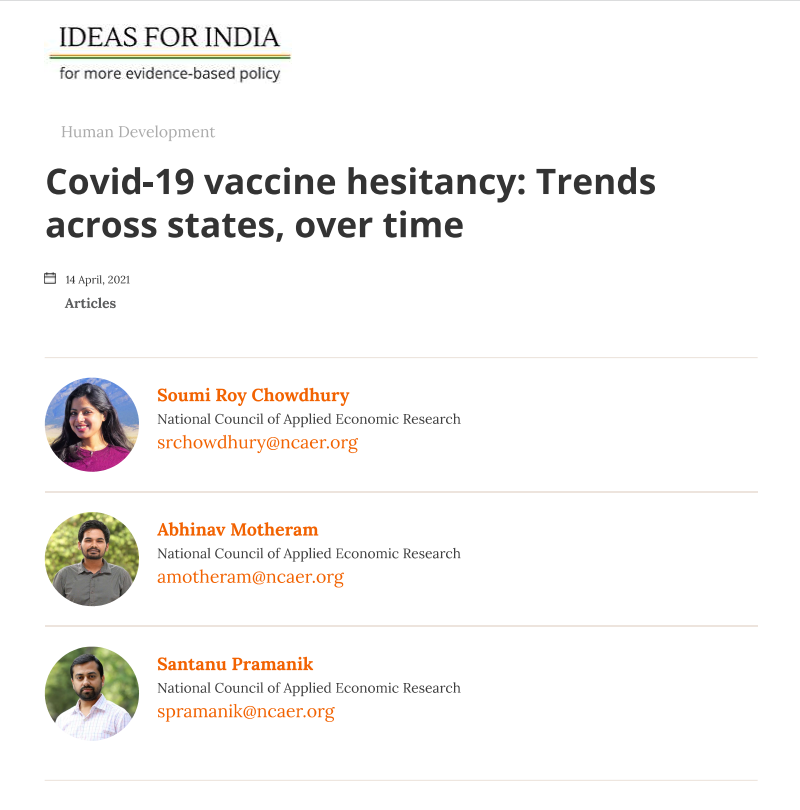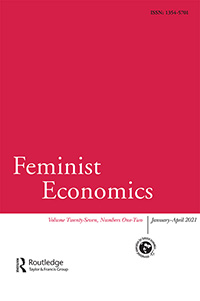
Delay in acceptance or refusal of vaccine against Covid-19 despite its availability, is a key hindrance in achieving optimal vaccination coverage among populations around the globe. Using data from a Facebook survey – conducted in partnership with University of Maryland and Carnegie Mellon – this article explores vaccine hesitancy in India, and trends across states…

The pandemic may have limited our ability to connect with the external world, but for several Indian women, isolation isn’t unfamiliar or new

India implemented one of the world’s most stringent lockdowns in response to the COVID-19 crisis. This study examines whether the impacts of the lockdown on employment differed by gender in areas surrounding Delhi. An ongoing monthly employment survey between March 2019 and May 2020 allows for comparison before and after lockdown. Estimates based on random-effects logistic regression models show that for men, the predicted probability of employment declined from 0.88 to 0.57, while for women it fell from 0.34 to 0.22. Women’s concentration in self-employment may be one reason why their employment was somewhat protected. However, when looking only at wage workers, the study finds that women experienced greater job losses than men with predicted probability of employment declining by 72 percent for women compared to 40 percent for men. The findings highlight the gendered impacts of macro crises and inform policy considerations through ongoing phases of lockdowns and relaxation.
Click here to read more

It is important to assess the extent of the educational disruption. Delhi Coronavirus Telephone Survey Wave 4 (DCVTS-4), conducted between December 23, 2020, and January 4, 2021, offers some insights. DCVTS-4 collected data on 1,530 children in the 6-14 years category on the extent of the disruptions in schooling and learning. Three findings from this survey are pertinent for designing effective remedies.

The beginning of the vaccination programme suggests that the end is in sight. How quickly we reach the goal post depends on how well prepared we are as we enter the race.









